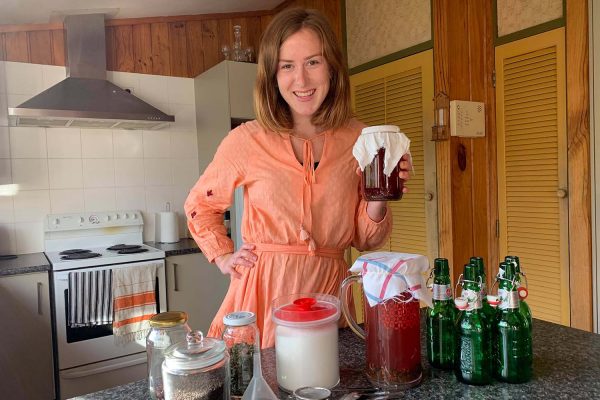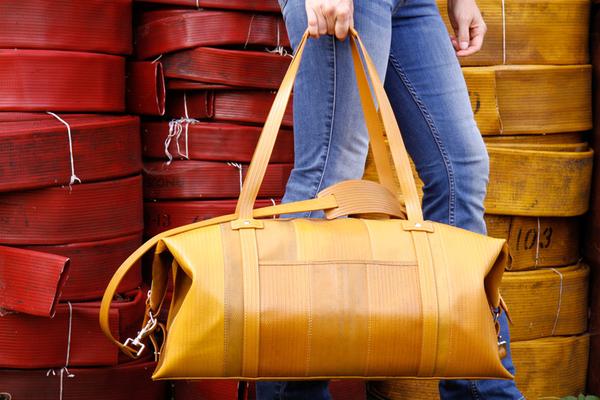The two words that link your lipstick to your ice cream, rainforest destruction to your dog food, potato chips to forest fires, and children slavery to a bar of chocolate.
Palm oil.
The two words responsible for the death of nearly 150,000 orangutans in the past 19 years, and the clearing of approximately 300 soccer fields of rainforest every hour.
Image via New York Times

What is palm oil and how can we avoid it when we shop?
Palm oil comes from the Palm Fruit (Elaeis Guineensis plant if you want to get really fancy), which originated in West Africa and grows in hot, wet climates. It’s the most widely produced vegetable oil on the planet, with 90% of palm oil grown in Indonesia and Malaysia.
Palm oil itself is not the problem; it’s the way it is harvested in an excessive and unsustainable way, that causes so much social and environmental devastation.
Although Palm oil is said to be found in 50% of supermarket products, we’re still unfamiliar with seeing the term ‘palm oil’ on the ingredients list. Surely that’s illegal?
By law, in Australia and New Zealand, only three vegetable oils need to be labeled in the ingredients list due to food allergies: peanut oil, sesame oil, and soybean oil.
If you’re allergic to supporting the destruction of rainforests and death of orangutans, you’re out of luck.
Turns out, instead of being explicitly labeled in the ingredients list, palm oil goes by around 200 pseudo names
Watch out for:
Acetic and fatty acid esters of glycerol (472a/E472a), Aluminium stearate, Aluminium, calcium, sodium, magnesium salts of fatty acids (470/E470a; E470b), Ammonium laureth sulphate, Ammonium lauryl sulphate, Arachamide mea, Ascorbyl palmitate, Ascorbyl palmitate (304), Azelaic acid, Butyl stearate, Calcium lactylate, Calcium oleyl lactylate, Calcium stearate, Calcium stearoyl lactylate (482/E482), Capric triglyceride, Caprylic acid, Caprylic triglyceride, Caprylic/capric triglyceride, Caprylic/capric/stearic triglyceride, Capryloyl glycine, Caprylyl glycol, Ceteareth (2-100), Cetearyl alcohol, Cetearyl ethylhexanote, Cetearyl glucoside, Cetearyl isononanoate, Ceteth-20, Ceteth-24, Cetyl acetate, Cetyl alcohol, Cetyl ethylhexanoate, Cetyl hydroxyethylcellulose, Cetyl lactate, Cetyl octanoate, Cetyl palmitate, Cetyl ricinoleate, Citric and fatty acid esters of glycerol (472c/E472c), Cocoa butter equivalent (CBE), Cocoa butter substitute (CBS), Decyl oleate, Diacetyltartaric and fatty acid esters of glycerol (472e/E472e), Dilinoleic acid, Disodium laureth sulfosuccinate, Disodium lauryl sulfosuccinate, Distilled Monoglyceride Palm, Elaeis guineensis oil, Emulsifier 422, 430-36, 470-8, 481-483, 493-5, Epoxidized palm oil (uv cured coatings), Etyl Palmitate, Ethyl lauroyl arginate (243), Ethylene glycol monostearate, Ethylhexyl hydroxystearate, Ethylhexyl palmitate, Ethylhexyl stearate, Ethylhexylglycerin, Fatty alcohol sulphates, Glycerin, Glycerin or glycerol (442), Glyceryl distearate, Glyceryl laurate, Glyceryl monostearate, Glyceryl myristate, Glyceryl oleate, Glyceryl polymethacrylate, Glyceryl stearate, Glyceryl stearate SE, Glycol distearate, Glycol stearate, Guineesis (palm), Hexadecylic, Hexyl laurate, Hexyldecanol, Hydrogenated palm glycerides, Isopropyl isostearate, Isopropyl palmitate, Isopropyl titanium triisostearate, Isostearamide DEA, Isostearate DEA, Isostearic acid, Isostearyl alcohol, Lactic and fatty acid easters of glycerol (472b/E472b), Lauramide DEA, Lauramide MEA, Lauramine oxide, Laureth, Lauric acid Lauroyl sarcosine, Lauryl betaine, Lauryl lactate, Lauryl glucoside (from palm), Lauryl pyrrolidone, Linoleic acid, Magnesium myristate, Magnesium stearate, Mixed tartaric, acetic and fatty acid esters of glycerol (472f/E472f), Mono-and- di-glycerides of fatty acids (471/E471), Myristate, Myristic acid, Myristic Cetrimonium Chloride Acid, Myristoyl, Myristyl alcohol, Myristyl myristate, Octyl palmitate, Octyl stearate, Octyldodecyl myristate, Octyldodecyl stearoyl stearate, Oleamide MIPA, Oleic acid, Oleyl betaine, Palm Glycerides, Palm fruit oil, Palm Kernel, Palm kernel oil, Palm oil, Palm olein, Palm stearine, Palmate, Palmitate, Palmitic acid, Palmitamidopropyltrimonium chloride, Palmityl Alcohol, Palmolein, Palmitoyl myristyl serinate, Palmitoyl oxostearamide, Palmitoyl oligopeptide, Palmitoyl tetrapeptide-3, PEG-100 stearate, and Sodium Lauryl Lactylate/Sulphate.
If you’re less inclined to memorise 136 alternative names of palm oil while you’re shopping (we don’t blame you!), start by learning these four root words:
- Palm
- Stear
- Laur
- Glyc
Although these root words don’t 100% conclude that palm oil is present, they are worth avoiding if you can, referring back to the greater list above for further confirmation, or contacting the company to double check.
Just when you thought you were past reading our big lists… palm oil is generally found in these products:
Food: Most commonly listed as vegetable oil or vegetable fat.
- Nut butters
- Bread
- Dried fruit
- Potato chips
- Fast food
- Instant noodles
- Cereal
- Baby formula
- Pet food
- Donuts
- Chocolate
- Confectionery
- Biscuits
- Ice cream
- Cooking oil
- Margarine
Cosmetics: Most commonly listed as Elaeis guineensis oil.
- Lipstick
- Skincare
- Toothpaste
- Makeup
- Shampoo & conditioner
- Soap
Home products:
- Laundry detergent
- Cleaning products
Unfortunately, these lists don’t cover it all. Everyday household products and food have become hugely reliant on palm oil; you can never be safe unless you check the ingredients list properly, or contact the company directly.
Palm Oil Free CSPO Products
On top of hiding palm oil in hundreds of different names, companies try their best to persuade us their products are palm oil free, by using the following loaded statements:
- Palm oil derivatives (this still means palm oil!)
- Minimal palm oil ingredients… even if it’s minimal, it’s still there
- Member of the Roundtable on Sustainable Palm Oil (RSPO): this can mean they either use sustainable palm oil or have only committed to using it in the near future. There is constant debate around the legitimacy of the RSPO label, and many believe it’s strong greenwashing we shouldn’t be fooled by.
With all this in mind, you may be overwhelmed by the facts, and devastated at how your most recently bought products may have contributed to a worldwide crisis. It’s not worth crying over spilled milk, or in this case, spilled palm oil. Instead, use this information to empower you in your shopping, and check out our list of online stores to purchase palm oil free products you can trust.
Where to shop palm oil free
The Australian Natural Soap Company
Have any to add to this list? Leave them in the comments below!


